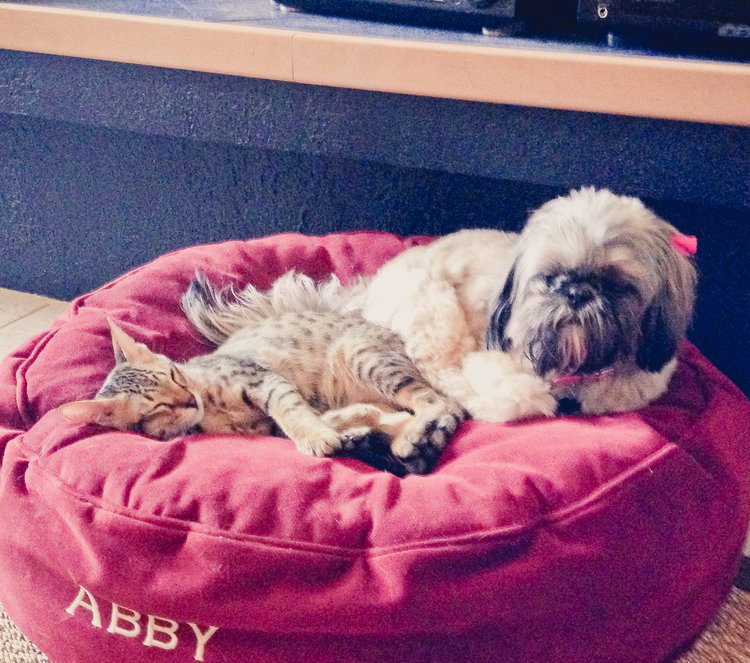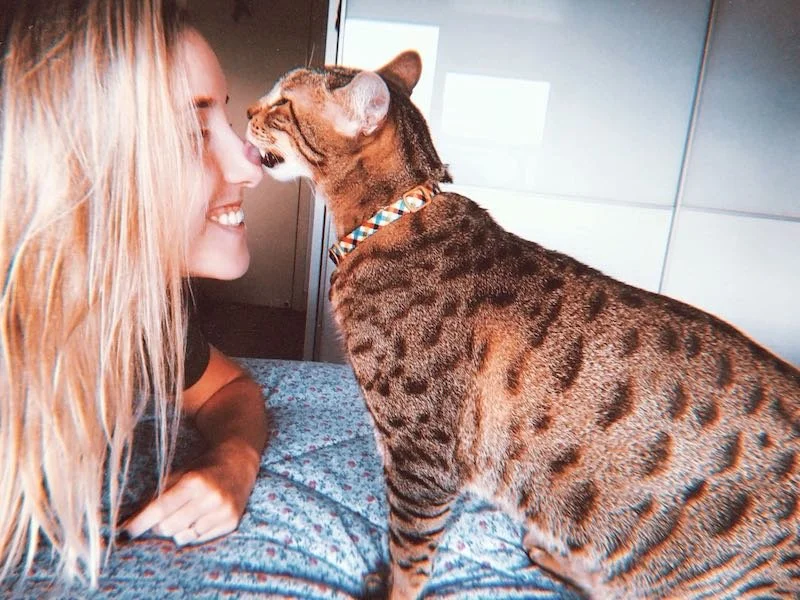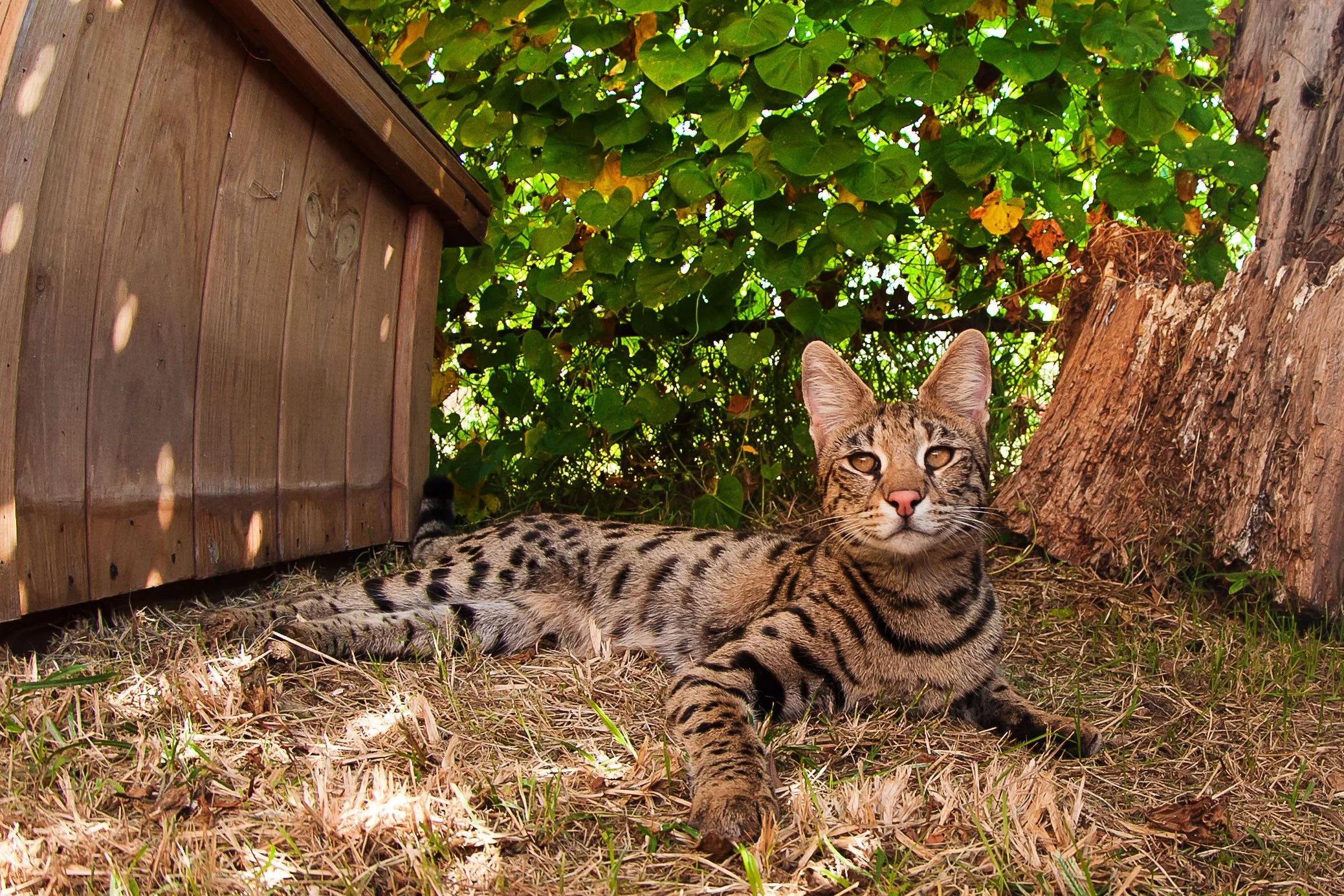How to Discipline your Cat
How Owning a Cat Can Improve a Student's Mental Health
How to Know Your Family is Ready for a Cat
How to Raise a Savannah Kitten
Savannah cats are very different from any other cat that you might choose to bring into your home. These cats are the result of breeding between domestic cats and a wild African serval cat. Since part of their genetics will come from an undomesticated animal, they can be more of a handful than other breeds. Here are some of the things to know when trying to raise a Savannah kitten.
Generation
If you are bringing a Savannah kitten into your home, it is vital that you know what generation they come from. F1 Savannah kittens will have a serval cat as a parent while F4 Savannah kittens will only have a great, great-grandparent who was a serval cat. The latter will obviously have a lot more of a domesticated heritage, so even if they look like a serval cat they might not act like one. Likewise, an F1 kitten will be a lot wilder, and might even be feral compared to an F3 or F4 kitten.
Vet Visits
A Savannah kitten might be classed as an exotic pet depending on where you live, so you need to make sure that you find a vet that is willing to work with it. What’s more, just as you would get coverage and protection for a regular cat from providers like Petsure, you will also need to look into finding insurance that will cover exotic cats. Vet bills can quickly become expensive, so ensuring that you have pet insurance will help you manage some of the many costs that can come with caring for this animal.
Diet
Luckily, Savannah cats have the same diet as domestic cats so you should not have to deviate too much from what you typically feed an ordinary cat. It is recommended that you feed your cat a combination of dry and wet food. They might also enjoy certain raw or cooked meats. Make sure any food that you do give them is free from cereals as this is a cat that is more suited to a wholly protein diet. Remember to give them a good supply of fresh water to drink from too.
Energy Levels
Regardless of the generation that you are adopting, you should be aware that Savannah cats have a lot more energy than their domesticated cousins. Therefore, if you want to get this type of cat, you need to make sure that you are spending enough time with them to make sure that they are exercised and burning up all of that energy. Toys that can simulate hunting, such as those on the end of a string, can be a great choice here.
Playfulness
Since these are wild animals, you do need to ensure that you properly socialise them from a young age. They generally work quite well with other pets, but you need to make sure that you have them spend time with other pets as soon as possible. Even if you don’t have other pets, make sure that they are handled by many different people as they can cope with. If it looks like they are showing signs of distress when you introduce them to new people, you should consider keeping them more isolated.
A Savannah kitten can be a great addition to your home, but you have to be aware that they can be slightly different to raise than other cats. Do your duty as a pet owner, and make sure that you know how to properly care for your cat. If you can do so, you should hopefully be able to give your kitten a very long and happy life.
Click on the links in the article to see where it takes you.
Until our next cat convo
-MARTIN
Cat-proofing Your Home to Keep Your Pet Safe
What to Do if Your Indoor Cat Gets Outdoors
Best Ways to Check Your Cat for Dehydration at Home
Like humans, the total body water in a healthy cat is between 60-70% of their entire body weight. Dehydration is a deficit of water, i.e., the loss of biofluids in the body, compared to the amount of water consumed. If not restored, the water deficit can alter a cat's normal bodily functions and pose serious health concerns.
Reasons for Dehydration:
There can be more than one reason as to why your feline friend isn't well hydrated. Some of them are:
Temperature - The higher temperature in your cat's habitat amounts to a quick loss of water from her body. The drier the environment outside and inside your house, the more likely your cat would not be adequately hydrated.
Activity - The nature of some cats may be over-enthusiastic and playful. They tend to lose all their energy in jumping from one place to another, resulting in dehydration. Kittens, especially, are a bundle of power, and they love to play. Pet owners must ensure that they are consuming enough water throughout the day.
Behavior - Most cat's nature is to have fresh running water, from a water fountain and not from a bowl. This lack of required water intake in a cat's body results in dehydration which causes an imbalance in her bodily functions.
Symptoms of Dehydration in Cats
Unless it’s a visible injury, felines can mask their pain and illnesses exceptionally, which is why it can be difficult to tell if your cat is dehydrated. However, there are ways pet owners can take the cue and figure out if their feline friend is dehydrated. They may show sure signs such as:
A shift in skin elasticity, i.e., upon pinching the coat, the folded skin stays upright
Less frequent urination, i.e., urinating less than normal
Visibly out of breath, rapid heartbeat, palpitations, etc
Dry mouth with hollow, darkened and sunken eyes
Being inactive, sluggish or lethargic
Infrequent bowel movement - constipation
Cause of Dehydration - Other than the risk of dehydration, the loss of body fluids can severely affect your cat's normal bodily functions, imbalance in metabolism, proper organ functioning, and risk of poor skin health. In order to maintain your cat’s coat and optimal health, pet parents must ensure that they subscribe to a monthly flea treatment for cats, which will prevent both internal and external infestation. Further, we have listed some tested and tried tests you can perform to check the hydration level of your cat:
1. Skin Test:
Similar to humans, dehydration in cats happens when there is excessive loss of fluid from its body. There are classic signs to identify the same. Some prominent ones are dry gums, refusal to eat food, and sunken eyes. The skin test is the easiest way to know how hydrated your feline friend is and how much replenishment it needs. All you have to do is hold the skin above your cat's shoulders gently and leave it to notice if it snaps back or goes back slowly in its place. The more slowly it goes back, the more dehydrated your cat is.
2. Eyes Test
Eyes can tell a lot about the hydration state of your cat. One can easily make out the hydration levels through your cat's eyes. If they appear sunken and dull, your cat needs to be hydrated. In most cases, if your feline friend hasn't had water for a long duration, their eyes will lack their natural focus and shine and appear dry. Take the hint and replenish them with an ample amount of water.
3. Gums Test
One of the simplest ways to check the hydration level of your cat is by checking its gum. If the gum is pink and moist, your feline friend is well hydrated. If it appears dry and sticky by any chance, you should be able to make out that your cat needs water. The other way to be sure is by pressing your finger gently on her gum and noticing the area staying white for more than a minute. If it happens, it is a sign that your cat is dehydrated.
4. Litter Test
One of the unusual but effective ways you can test the hydration situation of your cat is by observing its littering pattern. If your feline friend is dehydrated, there are high chances that she will be constipated. Notice if your cat is going to the bathroom less than usual, and these signs will give you a good idea if your cat is dehydrated.
5. Breathing Pattern
One more indication could be the abnormal breathing pattern of your cat. She could be panting heavily because of being dehydrated. While it can be a signal towards a potential danger, panting can also lead to a loss in your cat's mouth. Elevated heart rate is the most common indication from your cat that she desperately needs to replenish.
In conclusion, pet owners should be aware that every cat is unique and has preferences for its food habits. However, being hydrated is one of the most critical focus areas for the well-being of your feline friend. Not only does it keep their bodily fluids in proper function, but it also helps maintain the balanced electrolyte demand of the body. With adequate measures and proper planning, pet owners can keep their cats hydrated and nourished.











